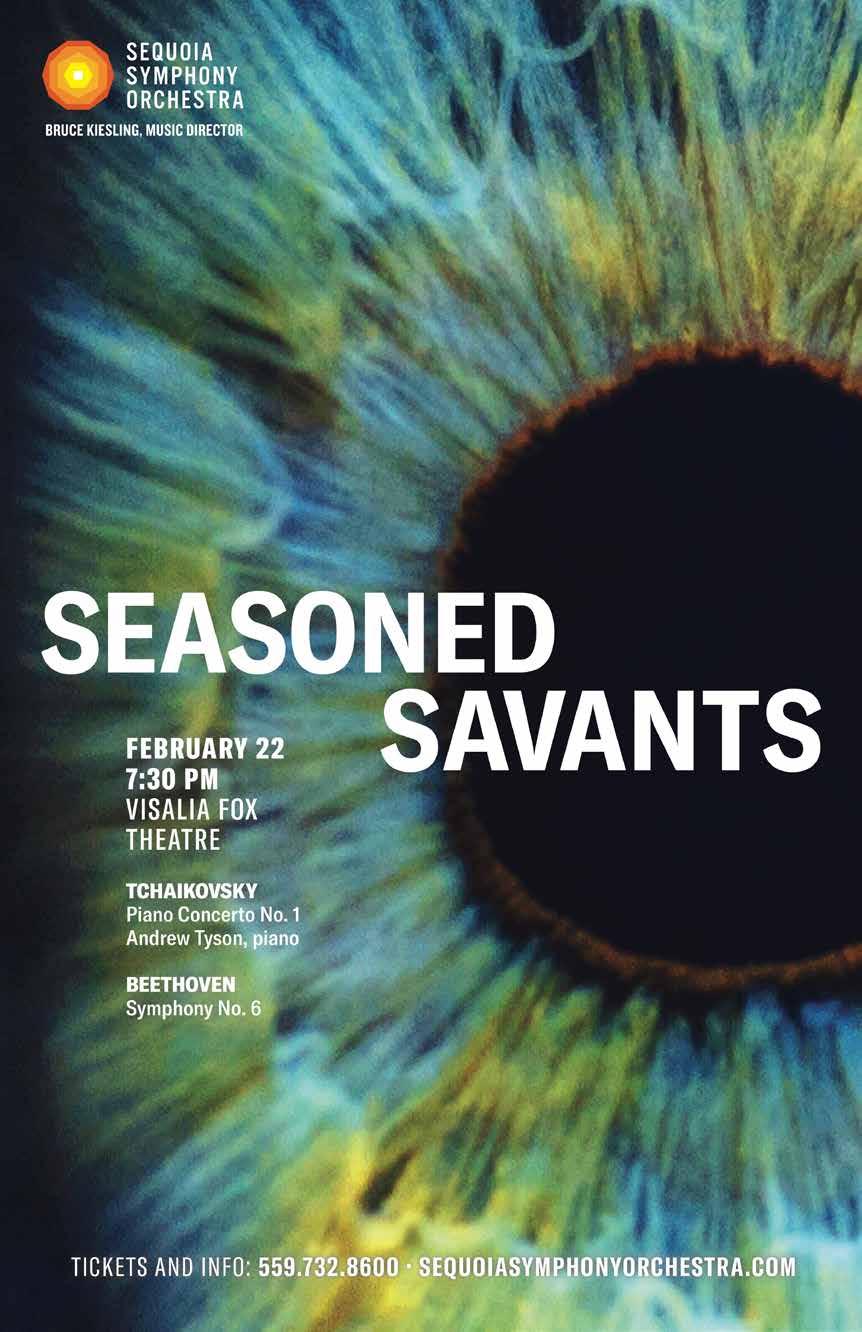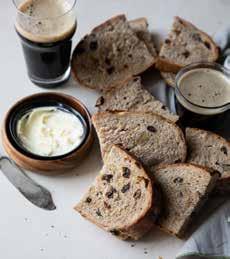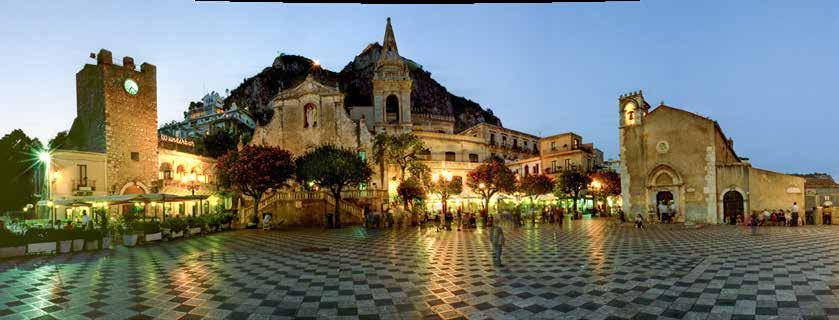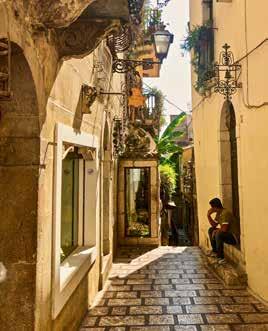
19 minute read
Next Gen: Lori Rice
BAKING UP ‘HOPPINESS’ WITH BEER BREAD
LOCAL WRITER LORI RICE’S NEW COLLECTION OF BREW-INFUSED RECIPES APPEALS TO CRAFT BEER ENTHUSIASTS AND BAKERS ALIKE
TEXT BY SUE BURNS | PHOTOS BY LORI RICE
Ales, lagers, dunkels and dubbels … pilsners, porters, stouts and IPAs … craft beers have been gaining traction by leaps and bounds in the U.S. for several years. And they’re not just for drinking. It’s common to use beer for cooking sausage and in stews and, of course, there’s the everpopular beer bread made with just a few ingredients, including the nondescript “12-ounce can of beer.” We tend to reach for the usual suspects — big-name beers that have been readily available at most every market for decades.
There’s a new sheriff in the bakery, though, and armed with her new book, “Beer Bread,” she’s teaching us about innovative craft beers and how to incorporate them into a slew of delicious treats.
From growing up with a mom who owned a cake shop to a career in public health and agriculture with a master’s degree in nutritional science, to traveling and connecting with food cultures around the world with her husband, Lori Rice has always had strong ties to food and cooking. Having her mom’s baked goods and homemade breads on her family’s table and working in bakeries in high school and college sparked her love for bread. While working on her master’s in nutritional sciences and undergraduate degree in nutrition, fitness and health, she had exposure to food, working in university restaurants, and local and state agricultural programs.
Her interest in foods — from how they are grown to how they are served — led her from her endeavors in nutrition to freelance writing to her food blog. While educating people about food has always been a priority, her blog, FakeFoodFree.com, sparked her interest in helping people learn not only about food but how to cook and eat healthy. This led to photographing food.
fuels his enthusiasm for the subject (and keeps him from being disappointed in constantly eating breads and foods cooked with beer as Rice develops and tests recipes).
Photo by Kaycee Maye Photography

piqued Rice’s curiosity about craft beers. She was especially taken with those in Germany and Ireland. She’s always had an interest in the history and processes of beer, and as craft beers became more popular in America, it became more of a part of her life here. Dan’s secondary degree in beer brewing and distilling Because of her affinity for breads and baked goods, Rice has always wanted to write a book on baking with beer. After the success of “Food on Tap,” her first book on cooking with beer, her publisher requested a baking book. Rice was delighted to make that a reality.
“Using craft beers in cooking and baking helps one to look deeply at the flavor profiles of different beers,” Rice said. “When you get more into craft and traditional styles coming to the U.S. from around the world, there are so many more options for flavors. This opens the idea of experimenting with those flavors in food. Baking is more of a science, and the carbonation helps with leavening. What happens with the flavor and what happens chemically when I bake with it? It’s a really fun approach.”
Not surprisingly, she is delighted with the recipes in the book, but does have some favorites. Six Pack Cinnamon Rolls, yeasted dough using spiced or brown beer, makes individual rolls in Mason jars for a real six pack.
Curry Chickpea-Topped Lager Flatbread has a soft and chewy Naan-style crust that is grilled and topped with smashed chickpeas, curry, lemon juice and yogurt tahini sauce. Cheese and Herb Pale Ale Bread — a twist on traditional beer bread pleasantly bitter from the pairing of hops and cheese — is a stir-and-bake recipe that’s a great start for someone new to baking with beer.
The nature of writing a bread book is challenging. In cooking, you have more freedom to throw ingredients together; baking is more scientific. One must be precise with ingredients and amounts, especially with yeast breads. Knowing


Cinnamon Raisin Walnut Brown Ale BreadRising Rolls: Yeast rolls for sides, sliders and snacks Cream Ale Irish Soda Bread



when dough has been kneaded, proofed and baked long enough can be perplexing. The hard and fast time guidelines in most recipes don’t really apply. Think rising times in the Central Valley in the chill of winter versus the triple digits of summer — “one hour” may not be long enough in the former and too long in the latter. This led her to provide examples of what to look for to make sure bread dough is ready for the next step.
Rice also focused on developing recipes suitable for novice and experienced bakers. With her tutorial on craft beer varieties and “Find a Beer” suggestions for every recipe, everyone can have fun learning about and experimenting with flavor profiles. All of the recipes in “Beer Bread” use either 6 or 12 ounces of beer (half or full standard bottle or can) to avoid leaving beer unused. All recipes use one standard packet of yeast. “In general,” Rice said, “if you’ve got a bottle or can of beer in the fridge, you can pick a recipe and make it.” Photos” to beer bloggers and influencers at the Beer Now Conference in Austin, and How to Photograph Your Own Cookbook and How to Photograph Sous Vide at the Food Photo Affair in Napa in November. You’ll also find Rice at signings for “Beer Bread” and she’ll talk about the book on upcoming podcasts.
In addition to writing, Rice has a successful business in food photography and recipe development, working with ag boards and brands. She offers online courses and enjoys speaking to people wanting to fine-tune their skills for a specific product. She’ll be teaching sessions on fresh and farm food photos to farmers market professionals in San Diego; “Better Beer “I definitely want to keep writing, but there’s nothing specific planned right now,” Rice said about plans for future books. “I would like to do more writing about food and its history, or more about farms … that is the direction that I think I’d like to move in.” L
(For schedules and more information, visit loririce.com\blog.)





LIGHT-BODIED LAGERS
TEXT BY BRIAN ALVES, HOP FORGED BREWERY, HANFORD
Just imagine: The sun is blaring (as much as we don’t want to imagine that yet); it has been a long day at work and then you walk in the door to kids screaming. What could be better than cracking open your favorite cold, crisp beer and hearing the sweet release of CO2?
Enter lagers. Everyone has heard of lager, but many might not know what makes it a lager, or why domestic and foreign versions (as they are commonly categorized) are so different from most of today’s craft beers.
There are two basic categories of beer — ales and lagers. Beer is commonly made up of four ingredients: hops, malted barley, water and yeast. The distinction between lager and ale is derived from the type of yeast used. Lagers are light in body, with a dry mouthfeel, while ales can vary from sweet to dry depending on the style.
Many variations of lagers exist. Commonly, variations are based on where they originate because of the different compositions of water. Take for instance Czech lagers, which are one of my all-time favorites of this style of beer. The water when this style originated was very clean and soft, lacking minerals — which opened the canvas for malt to be the star in this style. There are hops in every beer in varying quantities, but in this style, the bitterness is typically mild to low.
Lager yeast is a bottom-fermenting yeast that is fermented at much cooler temperatures than ales. The commercials are true. Lagers are brewed cold, filtered cold and packaged cold. Fermenting at a colder temperature reduces the level of esters (fruit) and phenols (spice), which are flavor compounds — a byproduct of yeast. The absence of these compounds results in a cleaner tasting beer. The length of fermentation is longer than that of an ale. Ales can ferment in three to five days, while a lager may take double or even triple that time.
So what gives lagers their dry and crisp taste? We know that they are fermented colder and longer than ales, but how does that translate to crisp? The answer is that this type of yeast is more attenuative, which means that it has a greater ability to ferment available sugars produced during the brewing process. Residual unfermentable sugars are what gives beer a sweeter and softer mouthfeel. A more attenuative yeast will produce a dryer, crisp-tasting beer.

Why are craft beers so much different than more well-known domestic and imported versions? The same goes for the question of why are grandma’s cookies so much better than store-bought? Love, care and quality ingredients. Craft brewers use the finest ingredients available. Large breweries use a high level of adjuncts in their beer, such as corn (or corn sugar) and rice to bring their costs down and lighten the flavor of beer even more.
Craft brewers are artisans, creating recipes that stray from the common path and traditional ways of brewing. This love and passion fuels the development of new beers and profiles. Different varieties of hops are used, similar to the different spices in your favorite soup, to bring out different flavor profiles and varying levels of bitterness. New varieties of hops are being developed constantly to help feed the growing passion of brewers and their enthusiasts. L

For all our travels throughout the mainland of Italy, we had never given a moment’s thought about traveling to Sicily. An island just a few miles southeast of Italy’s boot-shaped “toe,” this autonomous region of Italy might as well have been kicked to the other side of the world. It wasn’t until a recent trip (which by happenstance included multiple days in northeastern Sicily) that we discovered what we had been missing.
We began in Taormina, a town of 12,000 residents perched 800 feet above the Ionian Sea on the projecting point of a coastal mountain ridge. Originating as a Greek colony in the 4th century B.C., it had a “rediscovery” after German author Johann Goethe traveled there in the 1700s. In his book, “Italian Journey,” Goethe wrote, “To have seen Italy without having seen Sicily is not to have seen Italy at all, for Sicily is the clue to everything.”
Leaving his highest praise for Taormina, Goethe’s lyrical prose drew other authors and artists who were similarly captivated by this remarkable setting. Their stunning descriptions and renderings soon put Taormina on the map as a routine stop on the “Grand Tour“ — a coming-of-age ritual trip throughout Europe by young European aristocrats. Entrepreneurs followed, and the town’s first and still finest hotel, the Grand Belmond Timeo, opened its doors in the late 1800s. Taormina and the hotel quickly became the destination for the “aristocracy” of America (writers and stars of stage and screen). Truman Capote was a guest … for two years!

Now considered Sicily’s most beautiful town and No. 1 destination on the island, it seemed as if Taormina’s population had been matched by nearly as many tourists by the time we finally made it there this past October. Fortunately, most visitors are in town briefly on morning tours from cruise ships anchored 20 minutes away at Giardini Naxos. While guides corralled them to and from the magnificent Greco-Roman theater, the rest of the town (of which there is much to see) is relatively crowd-free. And the enchanting sunsets from the terraces, public
SICILY’S TAORMINA & MOUNT ETNA: SO DIFFERENT YET EQUALLY MAGNIFICENT

TEXT AND PHOTOS BY CHERYL LEVITAN

gardens and beaches that Goethe wrote about so beautifully? Those are for the sole pleasure of visitors who remain long after the ships have sailed toward their next port of call.
Walking through Taormina — ruled successively by Greeks, Romans, Arabs, Germans, Spaniards and French (not even a complete list!) — is like taking an international journey through 2,500 years of archeology and architecture. The town’s main drag, the cobblestoned pedestrian-only Corso Umberto, is lined by three-story tan and golden-hued buildings with balconied facades and street-level art galleries, boutiques, ceramics fabricators, cafes, restaurants and pastry shops (think marzipan and sheep’s milk ricotta-filled cannolis). Fine palazzi (palatial buildings and palaces) and piazzas (public squares) crop up intermittently to the left and right, as do narrow pathways leading to villas, churches, niches for artists selling their creations and jaw-dropping views. This town is a photo-taking, shopping and noshing dream — my trifecta of destination activities.
The town’s landmark is the Teatro Greco, a spectacular semi-circular, 5,000-seat open-air theater. Dean happily joined me in the search for the perfect photo, only to find each view or angle topped by the next. Originally built in the 3rd century B.C, by the Greeks, its size, brick

Top: Taormina at dusk standing in Piazza 9 Aprileblack lava and white marble chessboard stone walkway, clock tower to left, two churches and restaurants. Above: Taormina is so lovely, easy to forget real people live here until you see the woman ironing on her balcony. Right: Taormina is filled with beautifully appointed, hidden, quiet and narrow alleys.
construction and use of cavea (seating sections) divided by social class is proof of a Roman “rebuild” in the 2nd century B.C. Whoever gets the credit, this spectacular theater is confirmation of real estate’s mantra regarding location. Built on a high point, which juts ahead of the town, places the view of Mount Etna directly behind the stage. Further utilizing the natural lie of the land, many of the seating steps were cut directly into the base rock. Built to stand the test of time, this theater is still in regular use and the site for a large annual international

First views of Mount Etna from window of vehicle, dark ash was more eruption than we expected and made us wonder if we would get to the top and whether we would be able to see anything.

film festival. To watch a concert on the same stage where gladiators once fought nearly 2,000 years ago? Surreal!
The sight of Mount Etna from a distance is impressive, but nothing beats actually going there. A few days later and we were on our way. The 17-mile “as the crow flies” view of the volcano from Taormina translated into a 90-minute drive, which was an experience all its own. We passed through towns built right up to the edge of the road, often so narrow that the thought of opposing traffic could only mean a game of chicken with one winner. The inevitable happened. We confronted multiple vehicles, including a bus, all going in the opposite direction. But with skills clearly honed through practice, the utterance of a few “choice” words and an unfathomable understanding (at least to us) for which vehicle had the right of way, our driver proved adept at the fine art of backing up and squeezing through openings seemingly narrower than we were wide. As a passenger, do you look? Do you close your eyes? Neither choice was good.
The real sight was yet to come, however, and that was our first sighting of Etna through the window … much larger than expected … and erupting. Already aware that we were going to an active volcano in the midst of a series of eruptions was exciting; I had hopes to score a summit crater photo with a little puff of white smoke from summit degassing. But I hadn’t counted on a volcano spewing out enough dark ash to obscure a portion of what we planned to ascend. Despite its reputation as a “safe” volcano (low incidence of violent eruptions, one of the most studied and monitored volcanos, slow-moving lava that a sloth could probably avoid), the ash and/or cloud cover had me wondering if we’d be able to see anything at all.
Arriving at Rifugio Sapienza (the starting point for Etna tours located at 6,350 feet), the sunny 85-degree weather of Taormina was but a memory. Greeted by variable clouds, light winds and 55-degree temperatures, we were thankful for our jackets and gloves.
There are options from this point. Visitors can walk or take a 4-minute drive to the Silvestri Craters to see the lava flows and bowl-shaped depressions (caldera) formed after the 1893 eruption and lava flows. But to get the full experience, we chose to take the Funivia cable car to 8,200 feet, where a jacket rental shop does a brisk business for those still dressed for Taormina. It’s joined by a small cafe (whose Sicilian pizza caught my eye) and a shop (with tastings of pistachio nut spread from local orchards). Retail on a volcano was a surprise, but we appreciated the edible fortification as we exited the building to temperatures in the 40s, limited visibility and stiff winds.
Climbing into a Unimog 4x4 (included in the 60-euro cable car fare), we made the winding drive up black volcanic-gravel and ash to Torre del Filosofo (elevation 9,850 feet) to meet our volcanologist
guide and hike to the summit (almost 11,000 feet above sea level). Miraculously, the clouds vanished as we walked, but the temperatures dropped and the wind gusts increased to 30-40 mph. Trudging along, I looked up and, to my amazement, there it was! A summit crater emitting white smoke against suddenly clear blue skies. And at that moment in the unlikeliest of spots, I had an almost magical moment, an epiphany of sorts. I finally accomplished something I had yet to achieve anywhere else in the world. I took my first decent selfie! And now I understand the secret (but it’s unclear how often it can be replicated). I need to wear polarized sunglasses (making a cellphone screen impossible to see), cover as much of my face and hair as possible, have blind faith that I’m standing in front of what to capture (it helps if it’s really big), freeze my smile (no choice there) and start snapping away.
In the end, Sicily was one of our favorite travel destinations. Everyone we met was generous and friendly, always willing to share a laugh (even when it was directed toward themselves). Taormina itself was a magnificent profusion of activity and color, an abundance of sights and sounds (albeit at times rather too abundant with tourists). Yet all directions led somewhere wonderful, with surprises and views so special that they seemed placed just for us to find.
This town’s history and architecture have undergone faithful restoration and are found around every corner. This town beckons all to share in what has transpired to make this already beautiful setting such a remarkable place.
Mount Etna was the polar opposite (literally). Its black, otherworldly moonscape was devoid of much color, yet it was starkly beautiful. And despite the pleasant smells of the seaside and bakeries now replaced by whiffs of sulphur, no number of tourists could possibly make the vastness feel crowded. As one of the world’s largest volcanos with four prominent summit craters, its shear mass inexplicably seems to absorb the sound; you feel singular in Etna’s immenseness and realize your insignificance. The volcano challenges to find footing on that loose volcanic gravel (and then pushes with a gust of wind just as you thought that you had found your stride). You feel the power and energy of that place; the air is cold yet just under the gravel surface, you feel the heat. Etna lets you know that it’s alive.
Capriciously changing the weather at will, it gifts the lucky few with skies gloriously blue. And history? Taormina’s 2,300-plus years are dwarfed by Etna’s. Formed 35,000 years ago at the convergence of two tectonic plates, it has one of the world’s longest documented records of eruptions at both its summit and flanks. Infrequently dangerous, that volcanic soil supports extensive agriculture, with vineyards and orchards surrounding the volcano. Even the Sicilians refer to it as beautiful mountain.
Sicily … who knew? L
Above: A sign at Mount Etna shows the base populated area; the wavy areas are old lava flows and the puffs at the top denote the five currently active summit craters. Right: As close as the guide allows you to an actually erupting crater, people made a shallow hole to sit in because the volcanic gravel is very warm just below the surface.


AMERICAN FLOORS CARPET | TILE | HARDWOOD FLOORS | LUXURY VINYL PLANKS


It should ALWAYS be this e asy.... (559) 804-6890 be this e asy.... (559) 804-6890 Text anytime ALWAYS FREE ESTIMATES
or visit our showroom
1150 E. ACEQUIA, VISALIA Wednesday thru Saturday, 10am to 2pm. Anytime by Appointment

Happiness Loves Company At Carefield, we help people find their happy place

• Optimizing Health – Customized care and delicious food options • Enlightened Memory Care • Engagement and Socializing • Fun Activities • Community and Family Connection

